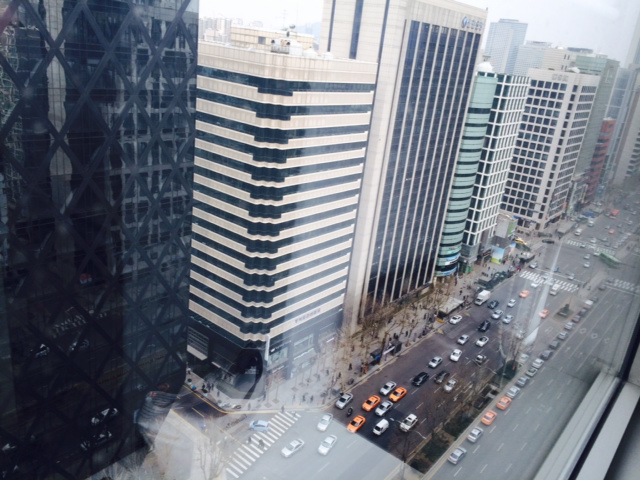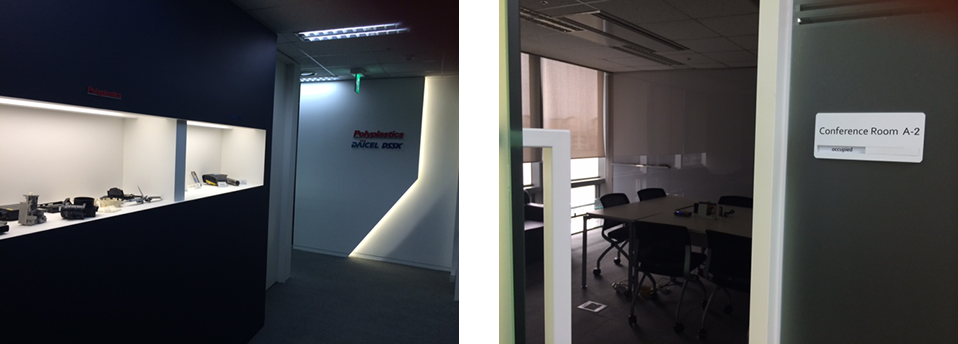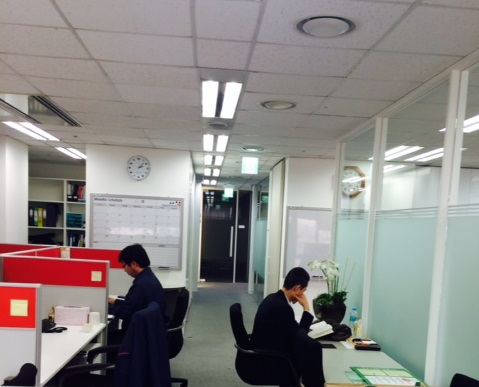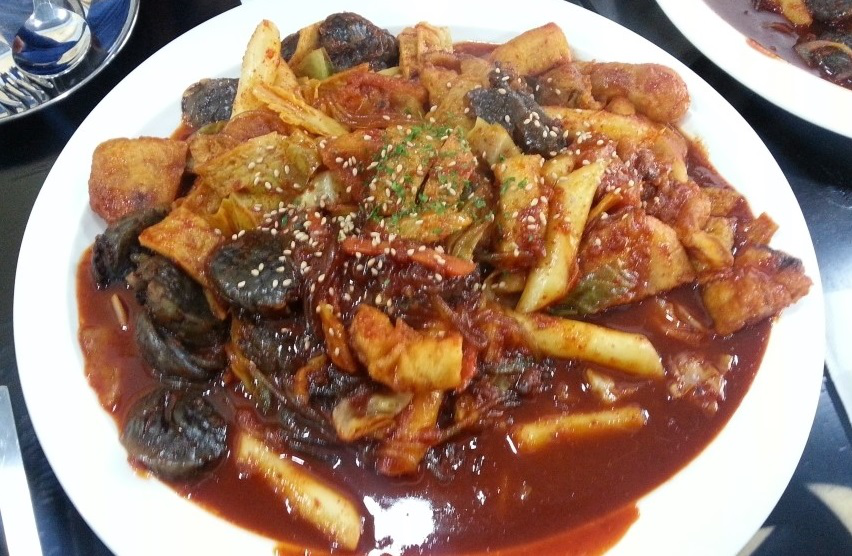In this issue we welcome PKL and LCPG,
two new companies that have joined P-Mates.
Because this is the debut for these companies,
we asked reporters from each of the companies to introduce them!
Introducing PKL
Polyplastics Korea Ltd. (PKL) was established on November 1, 2012. The PKL office is located in the Gangnam District in Seoul. Gangnam resembles Tokyo’s Shinagawa office district in Japan. It is very convenient in terms of access to public transportation and there are many high-rise buildings throughout the district.
The building where the PKL office is located is only a 3-minute walk from the subway station and it has a restaurant and a café on lower ground floor one. There are also drinking establishments and restaurants in the immediate vicinity of the station, which is great when we want to stop in somewhere after work for a drink. The photo shows the view from a PKL office window in the building.

PKL moved to the 17th floor of the building on February 17 and now shares office space with the Korea office of group company Daicel.
The three photos below show different views of the new office space. The first shows the office entrance. You can see the Polyplastics and Daicel logos together on the wall.
This is one of the conference rooms. Conference rooms are labeled A, B, C, etc.

The office space is divided by the partition on the right; the space left of the partition is used for the Polyplastics office and the space on the right is for the Daicel office.
As you see, Mr. Maeda, who was assigned to PKL from Japan, is hard at work.

The PKL employees are delighted to be in the new office. We intend to work hard from now on in this pleasant space!
Introducing Myself
 My name is Jeong Ming Seo. I graduated from the Japanese Department of the high school of foreign languages. Later, I graduated from a university in Kyushu, Japan. After graduating, I worked in Japan for three years and then returned to Korea and joined Polyplastics. I work in the Sales Support section, but there aren’t many employees yet at PKL so I also do a lot of other things like answer telephone calls, do simple accounting work, translate, handle the general affairs, input customer orders, and ship orders.
My name is Jeong Ming Seo. I graduated from the Japanese Department of the high school of foreign languages. Later, I graduated from a university in Kyushu, Japan. After graduating, I worked in Japan for three years and then returned to Korea and joined Polyplastics. I work in the Sales Support section, but there aren’t many employees yet at PKL so I also do a lot of other things like answer telephone calls, do simple accounting work, translate, handle the general affairs, input customer orders, and ship orders.
At first, I was the only employee at PKL, but now we have five employees. They all have much more experience than me, so I learn from them through daily activities.
Introducing Korea
There are numerous kinds of foods in Korea and it is also an outdoor food stall paradise. Food stalls line the streets selling roasted chestnuts, deep-fried gyoza (dumplings filled with minced pork and vegetables), bungeoppang (very similar to Japan’s taiyaki: fish-shaped pastry filled with red bean paste), and gimbap (the Korean version of Japan’s norimaki: vinegared rice rolled in laver).
One representative outdoor stall food I want to introduce this time is tteokbokki.

Tteokbokki is a dish of thin rod-shaped cakes of steamed non-glutinous rice called tteok that are fried together with vegetables and flavored with gochujang (fermented hot pepper paste) and starch syrup, so it has a sweet-and-spicy taste.
Bokki means to fry. The spicy hot sauce is a perfect match with the mild sweetness and soft texture of the rice cake. This is a food that is particularly popular with young women. And it’s very cheap—just 2,000 or 3,000 Won for a single serving—so in the early evening you can see high school girls walking along eating tteokbokki as a snack while they enjoy window shopping.
Because tteokbokki is comparatively easy to make, it’s also popular in the home as a between-meal dish that fathers make on their days off from work.
In the Shindang-dong area of Seoul, l there is a street called Tteokbokki Street because it is lined with more than 20 tteokbokki shops.
Samgyeopsal (sam is three, gyeop is layer, and sal is meat) is thick slices of grilled fatty pork (pork ribs) whose white fat and red meat appear to be in three layers.

There’s a set procedure for eating samgyeopsal.
First the meat is grilled on a hot plate along with gimchi that is well fermented (aged) and has a sour taste.
→ When it is cooked through, the meat is cut into smaller pieces with scissors.
→ The meat is dipped in gireumjang, which is a sauce made with salt and sesame oil, and then placed on a fresh sangchu (Korean lettuce) leaf or sesame leaf.
→ Garlic, fine strips of green onion, and gimchi are placed on top of the pork slice.
→ Ssamjang (a spicy paste used to season food wrapped in sangchu) is added and everything is rolled up in the leaf and eaten.
→ Eating the whole thing in one big bite is the Korean way to enjoy samgyeopsal.
The crisp texture of the meat, the fragrant flavor, the gimchi, and the vegetables all blend together perfectly in your mouth to produce a delicious eating experience—you just can’t get enough! Some people like to add rice and some people prefer to use rice cake instead of sangchu to wrap samgyeopsal.
Vegetables aide digestion, so this dish is easy on the body. It’s also easy on the budget (3,000-8,000 Won per person). No wonder samgyeopsal is so popular!
If you order samgyeopsal in a Korean restaurant, they bring out a special hot plate with an edge that slopes down. The sloped edge allows excess fat to drain away from the pork as you cook it. This is an idea distinctive to strongly health-conscious Korea. Please be sure to visit Korea. You’ll be able to experience all kinds of delicious foods here!